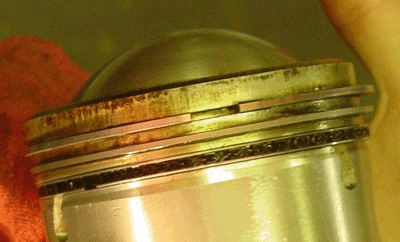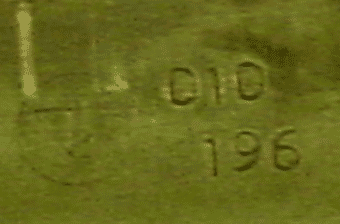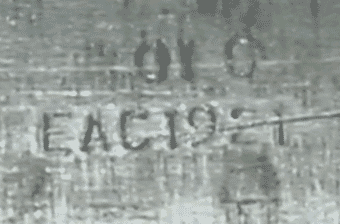This weekend marks the first year
It’s been a full year this weekend since Derek, Aaron, and I drove out to tidewater Virginia to pick up the old car. At that time I was thinking that I’d be driving the car a year after picking it up. But experience has taught me otherwise. I think we have made good progress nonetheless. It was my expectation that was out-of-line.
We’re watching Hurricane Isabel with some dread this weekend. It could end up being another Fran, some say, or worse. I just hope that the storm turns out to sea. There isn’t much to do about it except stockpile some water and make sure the flashlight works.
Pistons removed
I was thinking about a gradualist approach to remove the pistons, but I am thinking better of it now. We decided to remove the whole lot of them all together, so that we can take a closer look at the crankshaft. I spoke with my dad on the telephone over the weekend about the crankshaft. He tried replenishing bearings on an old engine once before, and they gave way shortly afterward. If the crankshaft is not true — if it has miniscule flatnesses especially — the crankshaft eats up the new bearings in short order. So, I’m going to look around for a machine shop that can check the crankshaft in all of its places and, if need be, turn and otherwise repair it.
of them all together, so that we can take a closer look at the crankshaft. I spoke with my dad on the telephone over the weekend about the crankshaft. He tried replenishing bearings on an old engine once before, and they gave way shortly afterward. If the crankshaft is not true — if it has miniscule flatnesses especially — the crankshaft eats up the new bearings in short order. So, I’m going to look around for a machine shop that can check the crankshaft in all of its places and, if need be, turn and otherwise repair it.
As my dad said, now is the time to do it, when the engine is out and already apart. If the bearings fail and the crankshaft is the problem, doing the work later will be even more frustrating.
The piston rings look quite good. The two at the top are supposed to have a taper that narrows at the bottom, and these seem to have that shape still. I would have expected worn rings to be virtually square from wear. The lowest ring is actually composed of three parts: two solid and very thin rings surrounding a chain-like spacer. This assembly is the so-called “oil ring” — probably because it keeps most of oil in the crankcase and not spilling into the firing chamber above the pistons.
I haven’t looked everything up yet, but I’m thinking that the bearings that we took off the piston rods were the 0.010 inch oversize versions. Not only do the markings suggest that, but that kind of wear would fit with the 0.030 inch oversize of the pistons. From what I can tell that size bearing is the maximum as well.


Rear body shell block-sanded
I began block-sanding the body shell. It is a little tedious, but I am amazed at how something as simple as block-sanding can tease out slight imperfections in the body shape. I’ve been marking them with masking tape as I go along. Many are slight dips or flatnesses in inappropriate places, usually at a spot where we had to do a little repair or where panels meet. One area that appeared with the sanding was in a place I wasn’t expecting, just above the left rear wheel well on the rear quarter panel. I suspect that the car was bumped at some time or another and very lightly dented. We probably removed a smattering of Bondo when we stripped the paint and didn’t see (or feel) the flatness.
I was hoping to fire up the air compressor and let Aaron have a go at applying some primer, but I think now that block sanding the remainder of the body shell and making some final repairs would be a better idea. Then we can take on the entire body shell in one day, or at least the top portion. We are going to use some POR-15 “Tie-Coat Primer” which is formulated to bond to cured POR-15. We might not have needed it, actually, since the block-sanding is making the surface rough enough for regular primer to bond to. I already have the Tie-Coat Primer, at any rate.
I’ll post pictures of the marked up car later on. Block-sanding is really important, but it’s easy to overlook because spraying primer is a heck of a lot more fun!